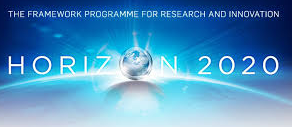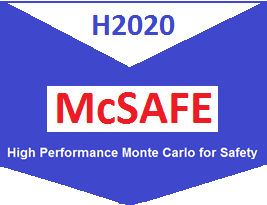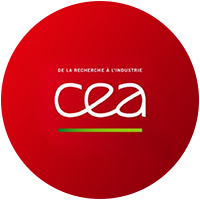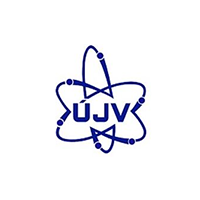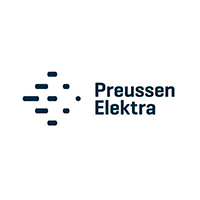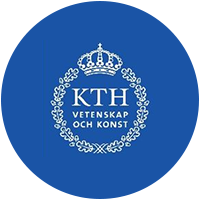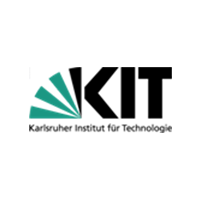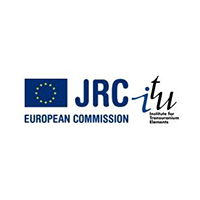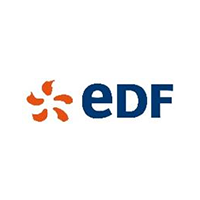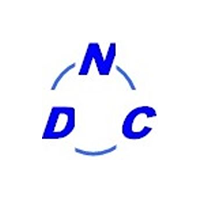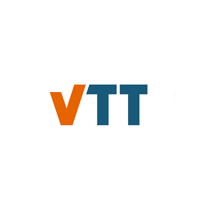McSAFE
Considering the priority topics of NUGENIA and the achievements of the EU HPMC project, the overall objective of the McSAFE project is to move the Monte Carlo based stand-alone and coupled solution methodologies (advanced depletion, optimal coupling of MC-codes to thermal-hydraulic solvers, time-dependent Monte Carlo and methods and algorithms for massively parallel simulations) to become valuable and widespread numerical tools for realistic core design, safety analysis and industry-like applications of LWRs of generation II and III. On one hand, the envisaged developments will permit to predict important core safety parameters with less conservatism than current state-of-the-art methods and on the other hand, it will make possible the increase the performance and operational flexibility of nuclear reactors. Last but not least, this kind of projects fosters the dissemination of knowledge from experienced researchers to young engineers, scientists as well as master and doctoral students. The McSAFE project is planned to be a research and innovation action. Even though the applications foreseen for this period are all focused on Generation II, the codes and methods to be further developed and validated can be applied to Gen-III and Gen-IV reactors in a straight-forward manner. In addition, the McSAFE tools and methods are also applicable to research reactors (core design optimisation and safety features evaluation), where the complicated geometry and physics of the core can be adequately simulated only by Monte Carlo codes.
Partners
Coordination
The EU H2020 McSAFE is coordinated by Dr. V. H. Sanchez Espinoza from the Karlsruhe Institute of Technology (KIT), Institute of Neutron Physics and Reactor Technology (INR). For more information, please send a email to: victor.sanchez@kit.edu
Objectives
The overall objective of the McSAFE project is to move the Monte Carlo based stand-alone and coupled solution methodologies to become valuable and widespread numerical tools for realistic core design, safety analysis and industry-like applications of LWRs of generation II and III including advanced depletion, optimal coupling of MC-codes to thermal-hydraulic solvers, time-dependent Monte Carlo and methods and algorithms for massively parallel simulations. Another important objective is the validation of the developed methods by using plant data of different NPPs.
Description of Work
The technical work of McSAFE is focused on:
- Methods for full-core MC-depletion and optimised thermal-hydraulic feedback integration
- Code integration and coupling methods for multi-physics based on MC-methods e.g. integration of TRANSURANUS and SERPENT in NURESIM Platform and coupling with thermal hydraulic solvers e.g. SUBCHANFLOW
- Developments of dynamic MC-methods for transient analysis. In this context, the MC codes MCNP, SERPENT and TRIPOLI will be extended for the simulation of the delay and prompt neutrons during transients scenarios and it will be coupled with TH-solvers.
- Validation of MC-based simulations using plant data for depletion, static and dynamic core analysis using the implemented coupled approaches. Also data of the SPERT-III-E tests will be used for it.

Main deliverables or results
- The McSAFE project will provide improved and more advanced numerical simulation tools for the design and optimisation of reactor cores as well as for the assessment of the core performance and safety assessment for any core design. The main European tools in the project McSAFE are the Monte Carlo particle transport codes SERPENT and TRIPOLI and the thermal-hydraulic subchannel codes FLICA4 and SUBCHANFLOW
- Numerical tools and methods developed within McSAFE can be used by different end-users (industry, regulators, research centres, etc.) and since they reflects the state-of-the-art it will be a basis for technical discussions between utilities and regulators aiming to keep plant safety at high level
- The McSAFE tools are essential to design reactor systems with improved safety features keeping sufficient safety margins. Disseminating most advanced safety analysis tools is a key factor to improve the safety culture in Europe and worldwide.
- The advanced numerical tools to be further developed, improved and validated within McSAFE are unique regarding their physical models and methodologies and the prediction capability and the spatial resolution..
- These numerical tools can be also applied for research reactors, SMR and innovative reactors.
Duration
01.09.2017 – 31.08.2020
3 years
Events
- 1st McSAFE Training Course, KIT Campus North, Institute of Neutron Physics and Reactor Technology (INR). June 22-24, 2020
- PHYSOR 2020 in Cambridge and Birmingham, 29. March to 2. April
- Int. Conf. Supercomputing in Nuclear Applications (SNA) and Monte Carlo (MC) SNA+MC2020 in Chiba, Japan, 18-22 May 2020
- PHYSOR 2018 in Mexico Cancun 21 to 28 April 2018
Publications
Synthesis reports
Conference papers:
- García, U. Imke, D. Ferraro, Victor Hugo Sanchez-Espinoza, and Luigi Mercatali; “Advanced Modelling Capabilities for Pin-Level Subchannel Analysis of PWR and VVER Reactors”. 18th International Topical Meeting on Nuclear Reactor Thermal Hydraulics (NURETH-18). Portland, USA, August, 2019 (2019). DOI: 10.5445/IR/1000099942.
- García, D. Ferraro, V. Valtavirta, Uwe Imke, Riku Tuominen, Victor Hugo Sanchez-Espinoza, and Luigi Mercatali. “Development of an Object-oriented Serpent2-SUBCHANFLOW Coupling and Verification with Problem 6 of the VERA Core Physics Benchmark”. International Conference on Mathematics and Computational Methods (M&C 2019). Portland, USA, August, 2019 (2019). DOI: 10.5445/IR/1000099853.
- Tantillo, S. D. Richards, A. J. Smethurst, D. J. Long; Integration of the MONK Monte Carlo Neutronics Code in the NURESIM Platform. International Conference on Mathematics and Computational Methods Applied to Nuclear Science and Engineering. 2019. Portland, Oregon.
- Davide Mancusi and Andrea Zoia; Towards zero-variance schemes for kinetic Monte Carlo simulations. Proceedings to the International Conference on Physics of Reactors 2020 (PHYSOR 2020). Cambridge, UK.
- Margaux Faucher, Davide Mancusi and Andrea Zoia; Variance-reduction methods for Monte Carlo kinetic simulations. Proceedings to the International Conference on Mathematics Computational Methods Applied to Nuclear Science and Engineering (M&C 2019). Portland, Oregon. USA: 2019.
- Margaux Faucher, Davide Mancusi and Andrea Zoia; Multi-physics transient simulations with TRIPOLI-4. Proceedings to the International Conference of Physics of Reactors 2020 (PHYSOR 2020). Cambridge, UK.
- Ferraro, D., García, M., Imke, U., Valtavirta, V., Tuominen, R., Bilodid, Y., Leppänen, J., and Sanchez-Espinoza, V. “Serpent / SUBCHANFLOW coupled calculations for a VVER core at hot full power”. In International Conference on Physics of Reactors 2020. Cambridge, UK, April, 2020
- Ferraro, D., García, M., Imke, U., Valtavirta, V., Tuominen, R., Leppänen, J., and Sanchez-Espinoza, V. “Serpent / SUBCHANFLOW coupled burnup calculations for VVER fuel assemblies”. In International Conference on Physics of Reactors 2020. Cambridge, UK, April, 2020
- García, R. Tuominen, A. Gommlich, Diego Ferraro, Riku Tuominen, Uwe Imke, Paul Van Uffelen, Luigi Mercatali, Victor Sanchez-Espinoza, Jaakko Leppänen, Sören Kliem. “Serpent2-SUBCHANFLOW-TRANSURANUS pin-by-pin depletion calculations for a PWR fuel assembly”. International Reactor Physics Conference (PHYSOR2020). Cambridge, UK, April, 2020 (2020).
- Manuel Garcia, Diego Ferraro, Ville Valtavirta, Riku Tuominen, Uwe Imke,Luigi Mercatali, Victor Sanchez-Espinoza, Jaakko Leppanen “A subchannel coarsening method for Serpent2-SUBCHANFLOW applied to a full-core VVER problem”. International Reactor Physics Conference (PHYSOR 2020). Cambridge, UK, April, 2020 (2020).
- H. Sanchez-Espinoza, L- Mercatali, J. Leppänen, E. Hoogenboom, R. Vocka, J. Dufek; “The McSAFE Project – High-Performance Monte Carlo Based Methods for Safety Demonstration: From Proof of Concept to Industry Applications”, International Reactor Physics Conference (PHYSOR 2020) Cambridge, UK. April 2020
- Ferraro, D., García, M., Imke, U., Valtavirta, V., Tuominen, R., Leppänen, J., and Sanchez-Espinoza, V. “Direct calculation of safety-related parameters for coupled transients using Monte Carlo neutronics plus subchannel thermal-hydraulics”. In International Conference on Mathematics and Computational Methods applied to Nuclear Science and Engineering. Portland, Oregon
- Ferraro, D., Faucher, M., Mancusi, D., Zoia, A., Valtavirta, V., Leppänen, J., and Sanchez-Espinoza, V. “Serpent and TRIPOLI-4® transient calculations comparisons for several reactivity insertion scenarios in a 3D PWR minicore benchmark”. In International Conference on Mathematics and Computational Methods applied to Nuclear Science and Engineering 2019. Portland, Oregon
- D. Ferraro, M. Garcia, L. Mercatali, V. H. Sanchez-Espinoza, J. Leppänen, V. Valtavirta; Foreseen capabilities, bottlenecks identification and potential limitations of Serpent MC transport code in large-scale full 3-D burnup calculations. Proceedings of The 26th International Conference On Nuclear Engineering Icone26. Paper 82305. July 22-26, 2018, London, England.
- M. Garcia, Diego Ferraro, Victor Hugo Sanchez-Espinoza, Luigi Mercatali, Jaakko Leppänen, Ville Valtavirta; Development of a Spatial Domain Decomposition Scheme for Monte Carlo Neutron Transport submitted to the ICONE26. Paper 82144. Proceedings of The 26th International Conference On Nuclear Engineering Icone26. July 22-26, 2018, London, England
- J. Leppänen; Acceleration Of Fission Source Convergence In The Serpent 2 Monte Carlo Code Using A Response Matrix Based Solution For The Initial Source Distribution. PHYSOR 2018: Reactors Physics paving the way towards more efficient systems. Cancun, Mexico, April 22-26, 2018
- V. H. Sanchez-Espinoza, J. Leppänen, L. Mercatali, J. E. Hoogenboom, R. Vodcka and J. Dufek; McSAFE – High Performance Monte Carlo Methods for SAFEty Analysis. NUGENIA Annual Forum 2018, 10-12 April 2018. Prague, Czech Republic.
Journal papers:
- Mancusi, A. Zoia; Zero-variance schemes for kinetic Monte Carlos simulations. European Physical Journal Plus 135,401 (2020). https://doi.org/10.1140/epjp/s13360-020-00387-8.
- Tuominen, V. Valtavirta, J. Leppänen; New energy deposition treatment in the Serpent 2 Monte Carlo transport code. ANE Volume 129, July 2019, pages 244-232. https://doi.org/10.1016/j.anucene.2019.02.003. Elsevier
- Diego Ferraro, Manuel Garcia, Uwe Imke, Ville Valtavirta, Jaakko Leppänen, Victor Sanchez-Espinoza; Serpent/SCF pin-level multiphysics solutions for the VERA Fuel Assembly benchmark. Annals of Nuclear Energy Volum,me 18, June 2019, Pages 102-114. https://doi.org/10.1016/j.anucene.2018.12.047
- Margaux Faucher, Davide Mancusi, Andrea Zoia; New kinetic simulation capabilities for Tripoli-4: methods and applications. Annals of Nuclear Energy V.120 October 2018, Pages 74-88. https://doi.org/10.1016/j.anucene.2018.05.030
- Ferraro, D., García, M., Valtavirta, V., Imke, U., Tuominen, R., Leppänen, J., and Sanchez-Espinoza, V. “Serpent/SUBCHANFLOW pin-by-pin coupled transient calculations for a PWR minicore”. Annals of Nuclear Energy, 137:107090 (2020). https://doi.org/10.1016/j.anucene.2019.107090
- Ferraro, D., García, M., Valtavirta, V., Imke, U., Tuominen, R., Leppänen, J., and Sanchez- Espinoza, V. “Serpent/SUBCHANFLOW pin-by-pin coupled transient calculations for the SPERT-IIIE hot full power tests”. Annals of Nuclear Energy, 142:107387 (2020). 1016/j.anucene.2020.107387
- Ferraro, D., Valtavirta, V., García, M., Imke, U., Tuominen, R., Leppänen, J., and Sanchez-Espinoza, V. “OECD/NRC PWR MOX/UO2 core transient benchmark pin-by-pin solutions using Serpent/SUBCHANFLOW. Annals of Nuclear Energy, 147:107745 (2020). https://doi.org/10.1016/j.anucene.2020.107745
- García, D. Ferraro, V. Valtavirta, et al. “Serpent2-SUBCHANFLOW pin-by-pin modelling capabilities for VVER geometries”. Annals of Nuclear Energy 135 (2020). DOI: https://doi.org/10.1016/j.anucene.2019.106955.
- García, R. Tuominen, A. Gommlich, et al. “A Serpent2-SUBCHANFLOW-TRANSURANUS coupling for pin-by-pin depletion calculations in Light Water Reactors”. Annals of Nuclear Energy 139 (2020). DOI: https://doi.org/10.1016/j.anucene.2019.107213.
- García, J. Leppänen, and V. Sanchez-Espinoza. “A Collision-based Domain Decomposition scheme for large-scale depletion with the Serpent 2 Monte Carlo code”. Submitted to Annals of Nuclear Energy.
- Christophe Demazière, Victor Hugo Sanchez-Espinoza, Bruno Chanaron: Advanced numerical simulation and modelling for reactor safety – contributions from the CORTEX, HPMC, McSAFE and NURESAFE projects. EPJ Nuclear Sci. Technol.6, 42 (2020). DOI.org/1051/epjn/2019006. https://zenodo.org/record/3819877#.X37aJOdCQuU
- Leppänen; Acceleration of fission source convergence in the Serpent 2 Monte Carlo code using a response matrix based solution for the initial source distribution. ANE Vol 128 ( June 2019) p-63-68. https://doi.org/10.1016/j.anucene.2018.12.044
- Alex Levinsky, VilleValtavirta, Frederick P.Adams, Vinicius N.P.Anghel; Modeling of the SPERT transients using Serpent 2 with time-dependent capabilities. ANE vol 125 march 2019, P-80-98 https://doi.org/10.1016/j.anucene.2018.09.038
- Ignas Mickus, Jan Dufek; Optimal neutron population growth in accelerated Monte Carlo criticality calculations. ANE Vol 117, July 2018, p 297-304. https://doi.org/10.1016/j.anucene.2018.03.046.
- Riku Tuominen, Ville Valtavirta, Jaakko Leppänen; New energy deposition treatment in the Serpent 2 Monte Carlo transport code. ANE Vol 129, July 2019, p224-232. https://doi.org/10.1016/j.anucene.2019.02.003.
- Simon Richards; Stochastic mixing of bound thermal scattering data in MONK. ANE Vol 136. 2020. DOI: 10.1016/j.anucene.2019.107052
- Davide Mancusi and Andrea Zoia; Zero-variance schemes for kinetic Monte Carlo simulations. Eur. Phys. J. Plus. 135.6, p401, 2020.
- Ignas Mickus, Jan Dufek; Optimal Neutron Population Growth in Accelerated Monte Carlo Criticality Calculations. Annals of Nuclear Energy submitted
- Margaux Faucher, Davide Mancusi, Andrea Zoia; New kinetic simulation capabilities for Tripoli-4 R: methods and applications. Annals of Nuclear Energy submitted
- M. Faucher, D. Mancusi and A. Zoia, Annals of Nuclear Energy, 120, 74-88 (2018).
- Levinsky et al., Annals of Nuclear Energy 125, 80-98 (2019).
- DiegoFerraro, ManuelGarcia, Uwe Imke, Ville Valtavirta, Jaakko Leppänen, Victor Sanchez-Espinoza; Serpent/SCF pin-level multiphysics solutions for the VERA Fuel Assembly benchmark. Annals of Nuclear Energy Volum,me 18, June 2019, Pages 102-114.


